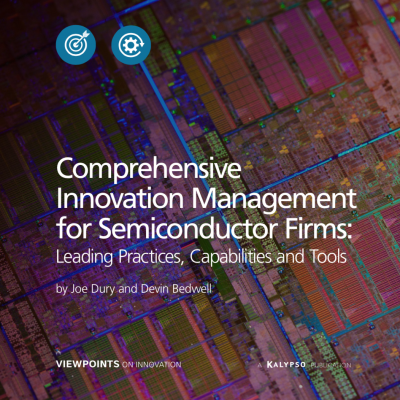Three Enhanced Innovation Capabilities that All Semiconductor Companies Need
Semiconductor companies are committed to consistently deliver meaningful growth from innovation — a promise few are prepared to deliver. Without a clear innovation strategy and roadmap, these companies, and the executives held accountable for results, are doomed to fail.
There is a growing trend of leading semiconductor companies using Product Lifecycle Management (PLM) tools – specifically product data management (PDM) – to accelerate product development, improve product quality, and reduce costs. Early adopters of PLM/PDM technology in the industry saw development cost reductions of up to 40%, coupled with improved methods to efficiently support product teams.
In recent years, leading semiconductor companies have adopted a suite of more sophisticated processes, tools, and practices to cover the full innovation process and get new products to the market faster and cheaper while delivering on growth targets.
Innovation progress has been good, but for most companies, the tools and processes in place today are not sufficient to drive innovation with the new technology and increasing complexity of semiconductor products of tomorrow.
To achieve true innovation results transformation, all semiconductor firms must now move beyond PDM and place more emphasis on first pass design success, efficient product introductions, and manufacturing flexibility. This will require a specific set of enhanced innovation capabilities, including:
- A development product record that goes beyond exiting product data record capabilities with a product data model that supports all phases of the development and innovation process
- Portfolio and pipeline management tools and practices to unite engineering and development teams with corporate strategy and customer demand
- Customer requirements management capabilities to align engineering and development teams with customer requirements and specifications, and to identify and fix problems early in the design cycle
Benefits of this more comprehensive approach include reduced development costs, improved product quality, and maximized return on Research and Development (R&D) investments. These improvements not only deliver on pressing cost-saving and margin-enhancement initiatives, but start the company on a path towards comprehensive innovation management.
More Reading

Kalypso has recently published a white paper titled “Comprehensive Innovation Management for Semiconductor Firms: Leading Practices, Capabilities and Tools”. This paper reviews some of the leading practices and enhanced tools that top companies in the semiconductor industry use to stay ahead in an industry where comprehensive innovation management is becoming a critical requirement.


